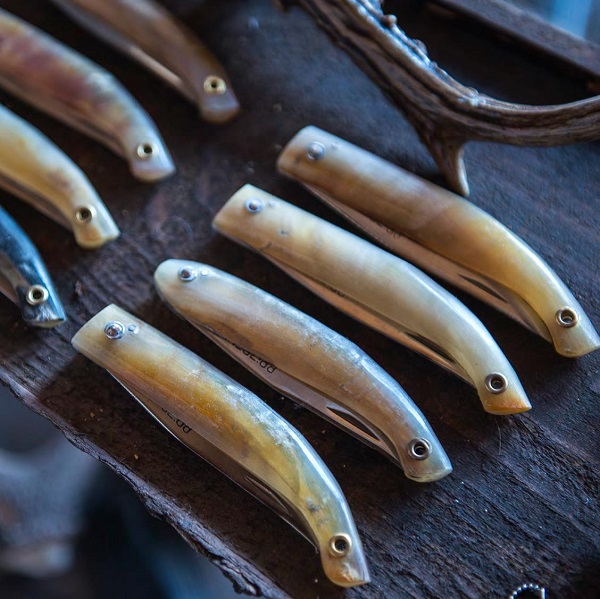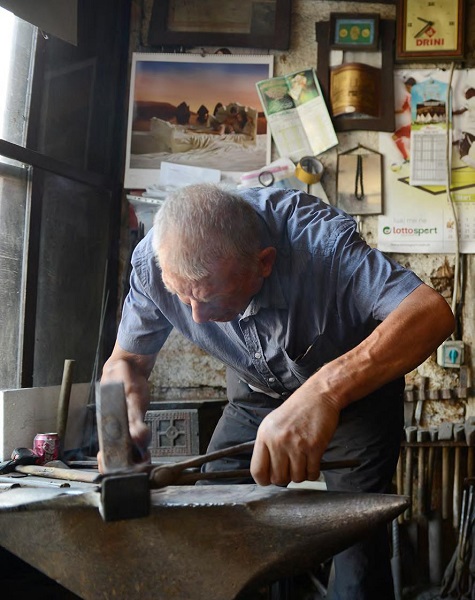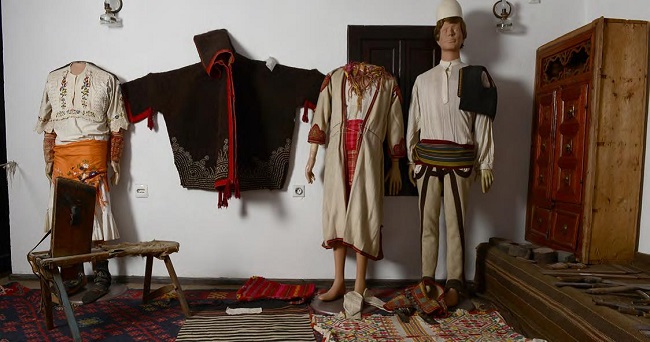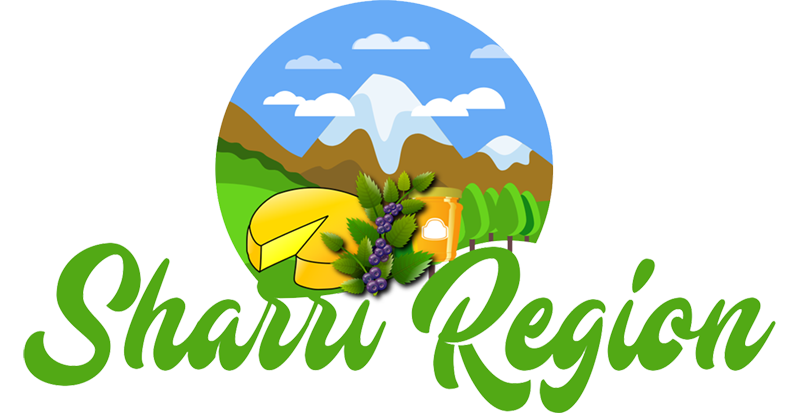The southern region has an amazing history of traditional crafts. Being a region where, cultures and religions, were intertwined of course artisan jobs have occupied an important place in the lives of residents and have had a great development. Of course, the most famous, most popular and almost the only craft that has survived to this day, Filigree, has to be distinguished as one of the most attractive and useful crafts for the inhabitants of the country.
The following are selected to include only some of the most popular and widespread traditional crafts.
SILVERSMITHING
Filigree is one of the handicrafts that made history in Prizren, and at the same time made Prizren to be known by others. Today silversmiths mostly craft new models made of gold and silver in line with new demands of buyers. In addition to private shops, silver jewelry products are also crafted at the ‘Filigran’ factory.

TAILORS
Using a needle, thread and twisted braid, red, blue, black or yellow fabric, they would craft the national wardrobe: long dollama dresses, mitan, xhamadan, shirts, etc., made of velvet or silk. The attire would be embroidered using gold, silver or silk thread.
WEAPON MAKERS
Rifles, swords and razors were produced using forging, smelting, chiseling, “savat”, filigree and granulate techniques. They were embroidered in gold and silver. Long rifles and pistols were mainly produced during the XVIII and XIX century.
WOODCARVERS
They would craft wood cases, decorative boxes, distaffs, frames, items for house interiors etc. Majority of these items carved in wood do not exist anymore as a result of demolishing of old traditional houses.
WEAVING AND EMBROIDERY
The models were mainly created based on natural shapes of flowers and their leaves (rose, tulip, violet, hyacinth and carnation). Geometric decorations were of round, triangle, square, quadrilateral and small rhomboid shape in the form of a net, etc. Among the zoomorphic motifs the most preferred ones were birds, snakes and peacocks in natural or schematic shapes.
SADDLERS
Created from leather and meshin: belts, narrow men’s belts with buckles, embroidered with indented circles; bandoliers, embroidered with a metal buckle; krygali traditional moccasinlike footwear, made of buffalo skin. They also produced paraphernalia for riding horses and carts such as: bashibozuksaddles, wrapped with bllangë or rogan; çibuksaddle, with horizontal stripes placed at set distances between each other and filled with wool or cotton through a pipe made of cornelian berry tree; kuskun saddle, with a leather strap at the end of the tail and knee support, adapted for mountainous conditions.
KNIFE MAKERS
The tools of the knife makers were: saw blades, padlocks, bobbin straps, different sizes of hammers, anvil, ratchets, hand sharpeners or turnbuttons (from 1932 with electric power). The subjects for this craft were the ram horns, buffalo horns, and occassionally, roe deer horns and iron rods. Whereas later it was thick and thin steel and mesing.

POTTERY MAKERS
One of the more characteristic products of this category were acoustic pipes. Except for these pipes, other products were: honey, jam and butter pots; pans, water canisters, flower pots, etc. Dishes for washing coffee cups were also specific.
BLACKSMITHS
They used to make different agricultural tools and of the kind used in daily life, such as: ironing irons, tongs, spades, support for stubs used in fireplaces, skewers with supports, lamp holders (asmallamba), buttons for door décor, door bolt and knocker, stars for bolt mechanisms and çokane, window bars, chains, collars for shepherd dogs, iron fences.

KAZAKS (SILK WORKERS)
Their products were the following: silk cloths; pyryngjyk cloths; cradle and table covers; brides veils (duvak); tarabullus belts; dysheme (catholic women sheets for strolling); rizaçutura, adorned with tirëfor engagements and for those invited to festivities; aprons and skutaçe (side cloth) of various models, especially vislake with line up flowers: tulip, roses, lilies,; white bohçe (aprons); sheets for Christian burials; tarabullus waist scarf, decorated or non-decorated.
MEN AND WOMEN WEAR
MEN WEAR - The national costumes consisted of turquoise, turquoise, dollama, white plis, headscarf. The European wardrobe "alla franga" was brought ready or refined by local craftsmen. The civic wardrobe consisted of cuvette, shirt, silk belt, tarabulus, mitan, xhamadan, jade, quill, dollama, tyrant, tunis, large tassel. Shoes: open shoes and half shoes, as well as ornate sandals, ribbon shoes on the front, etc. The Albanian men of Catholic faith dressed scarfs mostly in dark red or deep cherry.
WOMEN WEAR - During the XIX century, the European wear was liked more; full-length dresses and blouses, completed with the hat, bag, etc. Catholic women wore dark blue dollamas and brides wore them dark red. The bride's dress consisted of a white shirt vest, a thick silk scarf. During the winter, a "jumper" was used, and "chest" during summer. The shirts were of different types: up to the waist, under the knees, and to the lower legs; collars, and arm ornaments were worked with needles, ojas, etc. Dimis were made of silk, with rosewood, rose, blue, and so on. At the feet they were decorated with "bows".

